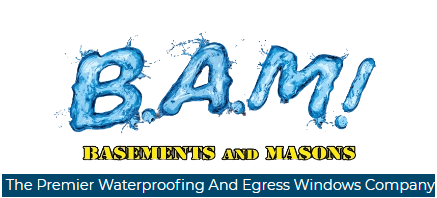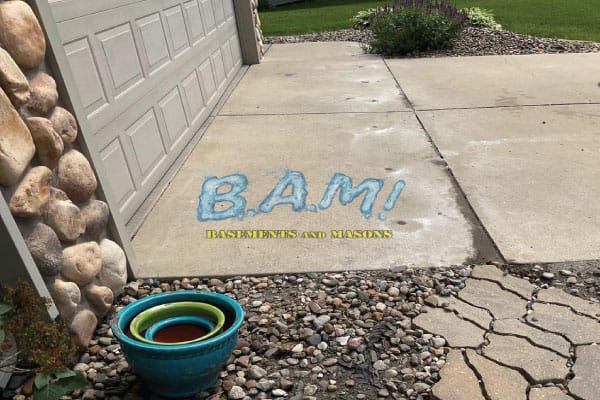Mudjacking, also known as slab jacking or concrete lifting, is a common method used to level out uneven concrete surfaces. It involves drilling holes into the concrete, then injecting a mixture of mud and other materials beneath the surface to lift it up and level it out. While mudjacking may seem like a cost-effective solution for uneven concrete, it is not always worth the cost in the long run. It is essential to consider the cons and factors that can affect the process’s success.
Factors to Consider before Mudjacking:
Type of Concrete: Not all types of concrete are suitable for mudjacking. If the concrete is severely damaged or deteriorated, mudjacking may not be a viable solution.
Size of the Slab: Large slabs may require additional support and may not be suitable for mudjacking.
Accessibility: The location of the slab can impact the ability to access it for the mudjacking process. If the slab is in a hard-to-reach area, it may be challenging to complete the mudjacking process.
Cost: Concrete mudjacking is often a cost-effective solution compared to removing and replacing the damaged slab. However, the cost can vary depending on the size and complexity of the project.
Experience and Reputation of the Contractor: It is crucial to choose a reputable and experienced contractor to perform the mudjacking process. Improper techniques or inadequate materials can result in a failed repair and costly future repairs
Cons of Concrete Mudjacking:
Limited Results: Concrete mudjacking is not always effective in repairing severely damaged or deteriorated concrete. In some cases, it may be necessary to remove and replace the damaged slab, which can be a more costly and time-consuming process.
Appearance: The appearance of the mudjacked concrete may not be as aesthetically pleasing as the original concrete, particularly if the slab was discolored or stained.
Environmental Concerns: The soil mixture used in concrete mudjacking can contain chemicals and may cause environmental damage if not disposed of properly.
While mudjacking may seem like a cost-effective solution for uneven concrete, it is not always worth the cost in the long run. It is a temporary fix that does not address the underlying cause of the problem, can be expensive, disruptive, and less effective than other solutions. Before deciding on mudjacking, it is important to consider all options and check out Polylifting instead.
Why Raising Concrete With Foam is better than mudjacking?
Raising concrete with foam is safer and better than mudjacking. Once the polyurethane foam hardens, it will become inert. Inert means that the foam won’t move. This means that the mixture that created the foam won’t get into your grass or soil. Most companies that claim foam is unsafe are usually mudjacking companies. Mudjacking is an older and outdated method of raising concrete. Mudjacking uses heavier materials and requires more cleanup. There are more holes that are large enough for weeds to grow through them. Water can also get in, leading to shifting slabs and further damage and settling.
What Are The Benefits Of Raising Concrete With Foam?
Raising concrete with PolyFoam, also known as polyurethane foam lifting or polyjacking, has several advantages over mudjacking, which is a more traditional method of lifting sunken or settled concrete. Raising concrete with Polyfoam comes with five major benefits. It is also perfectly safe for the environment.
1. Polyfoam is faster than other solutions. Polyfoam injections cure in about 15 minutes compared to a full day for mudjacking. It’s less invasive because it requires smaller and fewer drilling holes. It’s stronger, doesn’t retain moisture or pollute the environment, and can reach areas that are inaccessible to mudjacking equipment. If you were to replace your concrete slab, it would take days for the concrete company to come out, tear up your old slab, haul away the debris, pour the new slab, and wait for it all to dry. Also, it would be days before I could walk or drive on.
2. PolyFoam doesn’t require heavy excavation. All that’s needed to pump the foam under your concrete is drilled out dime-sized holes.
3. PolyFoam is lightweight, the foam used only weighs about 2.5 to 4 pounds per cubic foot. That means that the foam won’t add any additional weight on top of the sinking soil. This will prevent further sinkage and create a stronger foundation for your concrete to sit on.
4. PolyFoam is very cost-effective and efficient. If you were to mudjack your concrete, the slurry will wash away during the next heavy rain.
5. PolyFoam is also waterproof. The foam won’t move if it comes in contact with water. It will also still harden if water is present in the soil under your concrete.
What Companies are Raising Concrete With Foam Near Me?
There are so many Polylifting companies in Des Moines out there, and you might not know who to get in touch with. Make sure to do your homework, check reviews, BBB Ratings and also support local small businesses. That’s why you should call BAM Basements and Masons of Des Moines. Since 2012, we’ve been raising all sorts of concrete slabs with foam, including sidewalks, patios, driveways, and more. We also offer foundation repair, basement waterproofing, crawl space repair, and more. Call us today for your free estimate.

